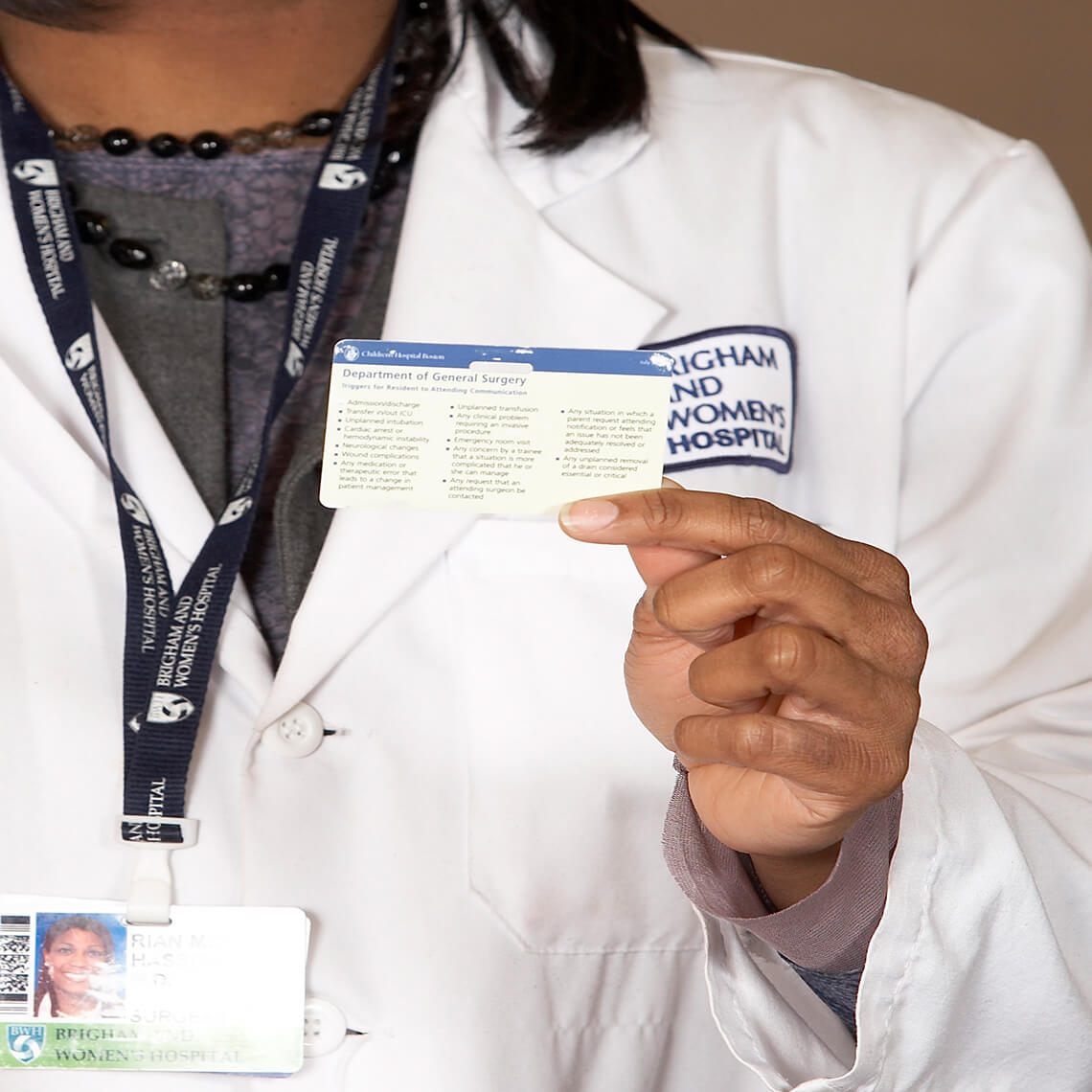Blog Post
The Power of Collaboration to Advance Patient Safety

One of CRICO’s unique values as a captive insurance program is our ability to convene decision-makers from across the Harvard medical community whose positions enable them to improve the practice of medicine on a systemic level.
Our board of directors comprises the leaders of our member organizations, many of whom work in direct competition with one another on a business level. However, when it comes to patient safety, all agree that collaboration works to everyone’s benefit. Through our unique ability to convene those who have a broad impact on patient safety, CRICO has been instrumental in helping our members establish initiatives intended to deliver the safest possible health care for patients and providers alike.
We have seen success with initiatives related to anesthesia, obstetrics, breast care, and neonatal encephalopathy, among others. However, despite CRICO’s decades-long support, the implementation of system-wide patient safety improvements requiring broad adoption and implementation across our affiliated organizations has been sadly lacking. We brought this challenge to our board in 2019, encouraging them to take it up, which they did. Making this vision a reality is now a key component of our current 2020—2022 Strategic Plan, and our member organizations have committed to implementing such an initiative. As I reflect on 2021, I recognize the huge steps forward we have made toward achieving this goal.
2020 was dedicated to establishing a singular focus that would allow all involved to implement the initiative from start to finish. We identified a few initiatives that demonstrated success in mitigating harm (measured by medical professional liability (MPL) risk) and the widest possible clinical reach. By consensus, “Closing the Loop on Missed Diagnoses with High MPL Risk” was chosen.
In discussions and focus groups with our board and leading representatives from our member organizations during the creation of our plan, it was recognized that a unified effort would be required to drive full adoption of any patient safety improvement project. Acknowledging the challenges associated with collaboration across hospital systems, recommendations were made to develop a better model for sharing, implementing, and sustaining change in order to accelerate improvement.
To address these challenges, CRICO partnered with Ariadne Labs to create the Patient Safety Adoption framework, identifying and providing guidance for achieving the key elements of implantation. Grounded in the principles of human-centered design and evidence from literature review, the framework is composed of five domains: leadership, culture & context, process, meaningful measurement, and person-centeredness.
Leveraging this common framework, it was agreed that each CRICO member intervention would aim to reduce locally-identified gaps in the timely diagnosis of breast, colorectal, prostate, and lung cancer attributed to missed opportunities to:
- appropriately screen asymptomatic patients, and
- work with patients with symptoms or complaints, including the appropriate communication of test results, consultation assessments, and follow up care plans
Given that missed and delayed cancer diagnoses is a persistent patient safety issue, this selection delivers the meaningful impact we and our leadership seek. Our data further supports this decision, clearly demonstrated in the results of a recent study to determine what proportion of high-injury severity malpractice cases involve diagnosis-related allegations. Missed cancer diagnoses was the largest vulnerability, responsible for 37.8 percent of claims.
(In organizations that do not provide care for patients related to the diagnosis of these four cancers, an alternative close-the-loop process appropriate for their patient population and MPL risk profile will be identified and addressed.)
During 2021, it was determined that the most effective intervention to prevent these diagnostic delays is the Ambulatory Safety Net (ASN) Program. Safety nets, which have demonstrated efficacy in reducing diagnostic delays, have been successfully implemented at two CRICO institutions, as well as at Kaiser Permanente. A return on investment analysis concluded that not only do the benefits of implementing ambulatory safety nets far outweigh the costs, but they also increase the capability to reduce health care disparities.
Development of our ASN is well underway, with an initial focus on colorectal cancer prevention: the design of the colorectal cancer ambulatory safety net was completed in September. In addition, we recently received a commitment from two-thirds of our members to implement the ASN program.
Looking forward to the coming year, I am encouraged by the progress we have already made and am proud of the impact we are poised to have on patients and their health care teams by increasing successful detection and management of cancer diagnoses.
References1. Newman-Toker DE, Schaffer AC, Yu-Moe CW, Nassery N, Tehrani ASS, Clemens GD, Wang Z, Ganai M, Siegal D. Serious misdiagnosis-related harms in malpractice claims: The “Big Three”–vascular events, infections, and cancers. Diagnosis. July 2019. (Published online July 11, 2019).Related Blog Posts
Investing in Patient Safety


Mind the Gaps: Learning How to Avoid Miscommunication Pitfalls
January Safety Salute | MedStar Health Creating a Just Culture

